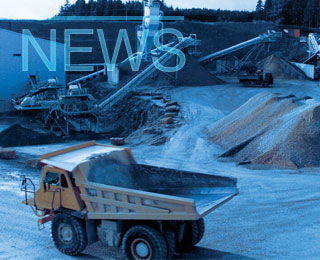Today Rodney Jones, the Spokesman of the Waiareka Valley Preservation Society, commented:
The application filed by Holcim on April 20 to construct a cement plant at Weston, just outside of Oamaru, still omits many of the key details the community needs to make an informed decision.
The life of this project will be 50 years. Holcim should have provided full details on how the plant will evolve over the next 50 years. By filing an incomplete application now, they are leaving many significant issues open ended. They are ensuring that the community in the future will have to deal with further inevitable developments on the proposed sites. For the next 50 years we will have to battle to preserve our quality of life.
The Ngapara coal mine has a life of 15 years. What happens after that? The Holcim application notes that the options beyond 15 years include transporting coal from a new or existing mine, or backloading from the Port of Timaru. Shouldn’t those consents be included or at the very least be forecast in some detail in this application, given that Ngapara coal has a defined finite life?
There are up to 72 truck movements a day associated with transporting the 200,000 tonnes of coal this plant will require. After 15 years will these truck movements come down SH1 and through Oamaru? Or will they come by train? Will we have an extra 2-3 coal trains a day lumbering through the centre of Oamaru on top of the planned two daily trains included in the application? All told, this could add up to 8-10 additional daily train movements per day.
Transit New Zealand has already expressed concern about the delays associated with trains carrying cement crossing SH1 on , with these cement trains already expected to incur 148 minutes of delay to traffic a week. An additional 2-3 coal trains could increase the delay to over 300-360 minutes – or over five to six hours per week. This is an unacceptable delay on the South Island’s key highway. Yet nowhere in their application do Holcim address this issue.
Holcim do not address what will happen to the Weston plant when it ceases operations in 50 years. As Westport is finding out, 50 years is very short life for an industrial plant. After all, Tiwai Point is already 35 years old.
Holcim is nomadic capital. They abandoned the Dunedin site at Burnside in 1988 and left it to decay as a contaminated site. Now they are preparing to abandon Westport. What will happen to the current plant, waste and environmental damage at Westport’s Cape Foulwind? Nowhere in their application do Holcim address this.
Given their appalling record of operating and abandoning cement plants, including international degradation of sites, Holcim should be forced to address how they propose to eventually to restore the Weston site, and if necessary pay a substantial bond to ensure compliance.
Will our children and grandchildren be left with an environmental eyesore that will be left abandoned for a few centuries? Is this the environmental legacy we want to leave in Weston and the Waiareka Valley?
Meanwhile, Holcim (New Zealand) Ltd has opened an Information Centre in Oamaru to provide the local community with resources and answers to their questions about Holcim’s Weston Option cement plant.
The Holcim Information Centre (126 - 132 Thames Street, or corner of Eden and Thames streets, Oamaru) will open every Wednesday (between 11am and 6.30pm) and will operate throughout the 40 working day submission period (which closes on Tuesday 19 June).
Holcim staff will be at the Information Centre on those days and will be able to answer questions that people may have, as well as provide detailed information from the Weston Option cement Plant Assessment of Environmental Effects, if required.
“We have put together a pack of material for people interested in making a positive submission on the Weston Option cement plant, which we believe would bring significant local benefits in terms of jobs, economic growth and diversity,” says Paul Commons, Manager Strategy and Development for Holcim (New Zealand) Ltd.
These packs are available for people visiting the Holcim Information Centre in Oamaru.
A cement plant at Weston would have ongoing direct and indirect economic benefits, including between 110 and 125 direct long-term jobs (worth around US$8 million a year in wages) and a further 80 to 120 jobs (worth another US$4-5 million a year) in professional, technical, maintenance and production vocations.
An additional US$106 million (estimated) would be spent in the district on construction activity, if the proposal went ahead.
Holcim has also provided full printed copies of the four-volume ‘Weston Option cement plant Assessment of Environmental Effects’ to the Otago Regional Council and Waitaki District Council, as well as providing a copy to the Oamaru Library.
The resource consenting process
Holcim New Zealand has now formally lodged the applications for the resource consents it needs to construct and operate the proposed Weston Option cement plant and associated quarries and pits. These applications were notified by the Otago Regional Council and the Waitaki District Council on 20 and 21 April.
